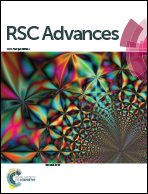A novel low temperature vapor phase hydrolysis method for the production of nano-structured silica materials using silicon tetrachloride†
Abstract
Here we report for the first time, a novel method of low temperature vapor phase hydrolysis for the production of nano-structured silica particles. Silica nanoparticles were obtained by the hydrolysis of silicon tetrachloride vapor with water vapor at a low temperature range (150–250 °C). The effects of reaction temperature and residence time on the specific surface area and size distribution were determined to obtain optimal synthesis conditions. Silica nanoparticles with a specific surface area of 418 m2 g−1 and an average size of 141.7 nm were obtained at a temperature of 150 °C and with a residence time of 5 s. The particle morphology, phase composition, chemical composition, thermal analysis, and chemical functional groups present were determined by TEM, XRD, XRF, TGA, and IR methods, respectively. Results indicated that silica synthesized by low temperature vapor phase hydrolysis method is an amorphous mesoporous material, with an approximately spherical shape, a mass friction demission of 2.29, and a high hydroxyl density of 13.03 nm−2. This method provides a simple and environmentally benign way for the mass production of silica nanoparticles, as well as a quick method for the preparation of functional silica materials.


 Please wait while we load your content...
Please wait while we load your content...